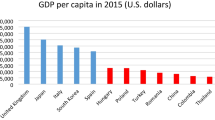Conclusions
Developing countries including the NIEs failed to maintain their shares in total foreign investment of all major OECD countries in the eighties. Shares were generally lower by 1988 than ten years ago. This negative trend can be observed for investment in manufacturing in particular, but also for non-manufacturing. Middle East and SubSaharan African countries came down to negligible shares, while shifts in shares mainly occurred between Latin America as a losing region and the Asian NIEs as winners. In absolute terms, however, Latin America remained a major host area. Within the regions, trends towards concentrating investment on few countries proliferated from Latin America where such concentration was traditionally high, to Asia with Singapore, Malaysia, Indonesia, and partly Hong Kong, in the lead. Against this background, home countries widely continued to maintain their traditionally preferred strongholds as did Japan in Southeast Asia, West Germany in Brazil and Argentina, the US in Latin America in general, and the UK in Commonwealth countries. Such patterns remained stable over time, but differed from each other.
Similar content being viewed by others
References
Agarwal, Jamuna P., “Determinants of Foreign Direct Investment: A Survey”.Weltwirtschaftliches Archiv, Vol. 116, 1980, pp. 739–773.
Casson, Mark C.,The Firm and the Market. Oxford 1987.
Dunning, John H.,International Production and the International Enterprise. London 1981.
—, “The Eclectic Paradigm of International Production: A Restatement and Some Possible Extension”.Journal of International Business Studies, Vol. 19,1988, pp. 1–31.
General Agreement on Tariffs and Trade (GATT),International Trade 1988-89, Vol. II. Geneva 1989.
Gross, Martin, “AuslÄndische Direktinvestitionen als Exportmotor. Das Beispiel der ASEAN-LÄnder”.Die Weltwirtschaft. 1986, No. 1, pp. 156–172.
Organization for Economic Cooperation and Development (OECD),International Direct Investment and the New Economic Environment. Paris 1989.
United Nations Industrial Development Organization (UNIDO),Foreign Direct Investment Flows to Developing Countries: Recent Trends, Major Determinants and Policy Implications. PPD.167, 10 July 1990. Vienna 1990.
About this article
Cite this article
Langhammer, R.J. Competition among developing countries for foreign investment in the eighties — Whom did OECD investors prefer?. Weltwirtschaftliches Archiv 127, 390–403 (1991). https://doi.org/10.1007/BF02707994
Issue Date:
DOI: https://doi.org/10.1007/BF02707994




